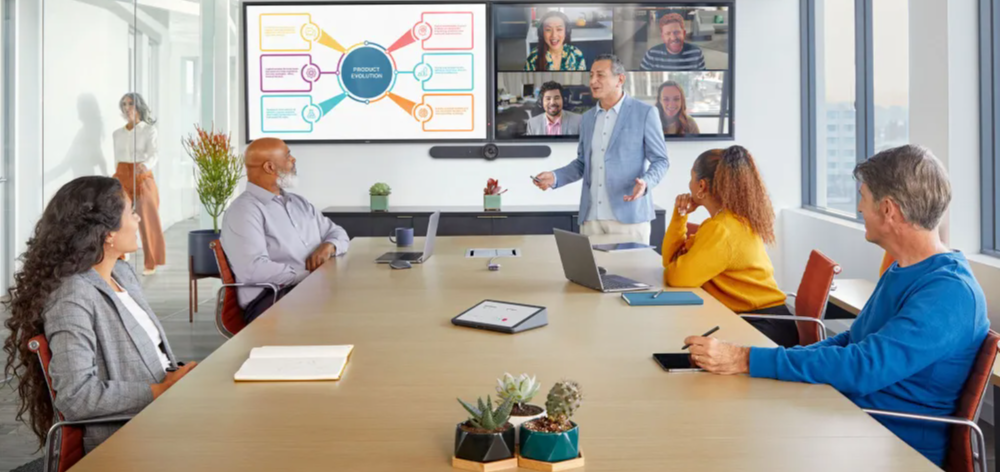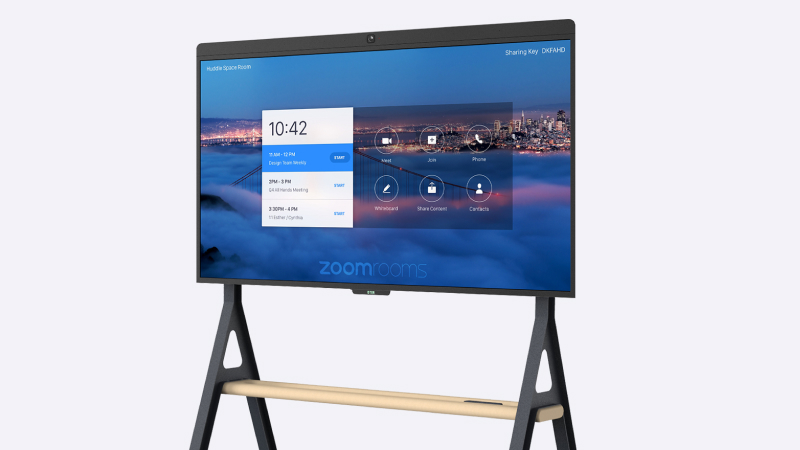.jpeg?width=1103&height=767&name=Blog_M6_RoomDesign_square%20(1).jpeg)
Designing AV Systems for Seamless Video Conferencing
To ensure seamless and productive meetings, it's crucial to design an audio-visual (AV) system tailored to your specific needs. In this blog, we'll explore the top 5 factors to consider when designing an AV system for video conferencing in various settings, from large meeting rooms to Zoom rooms and Microsoft Teams rooms.
5 Factors for Optimal AV Design
-
Room Size and Layout
Whether you're outfitting a large conference room or a smaller presentation room, the room's size and layout are fundamental considerations. In a large meeting room, you'll need high-quality cameras and microphones that can capture participants from various angles. In contrast, a smaller Zoom room might require a more compact setup. Consider the seating arrangement, the placement of screens, and the distance between participants to optimize sightlines and audio coverage.

-
Platform Compatibility

Compatibility with your chosen video conferencing platform is paramount. If your organization primarily uses Zoom or Microsoft Teams, ensure that your AV system integrates seamlessly with these platforms. For larger, more complex setups, consider dedicated solutions like Microsoft Teams Rooms (MTR) or Zoom Rooms, designed to enhance the user experience and streamline functionality.
-
Audio Quality
Clear and reliable audio is the backbone of any successful video conference. Invest in high-quality microphones and speakers that eliminate background noise and echo. For large conference rooms, consider using ceiling-mounted microphones to capture audio from all corners of the room. Echo-canceling technology is vital to ensure that participants can hear and be heard without disruptions.
-
Video Quality

Video quality is equally important. High-definition cameras with features like auto-focus and low-light correction can greatly enhance the video conferencing experience. In a large conference room, consider multiple cameras to capture various angles or utilize pan-tilt-zoom (PTZ) cameras to focus on the speaker. This flexibility ensures that participants can see the presenter and their content clearly.
-
User Interface and Control
The user interface and control system should be user-friendly and intuitive. Users should be able to start and manage video conferences effortlessly. Touchscreens or centralized control panels can simplify the process. In Microsoft Teams Rooms or Zoom Rooms, integration with the respective platforms can streamline scheduling, content sharing, and other meeting functions. Consider including features like one-touch join to make starting meetings a breeze.

Seize the Future: Investing in AV Systems for Enhanced Communication
Designing an AV system for video conferencing requires careful consideration of room size, platform compatibility, audio and video quality, and user interface. Whether you're setting up a large conference room, a presentation room, a Zoom room, or a Microsoft Teams Room, each space will have unique requirements. By prioritizing these factors, you can create a video conferencing environment that enhances communication, fosters collaboration, and delivers a superior user experience. In today's interconnected world, investing in the right AV system is an investment in the future of your business.


.jpg)
-1.jpg)